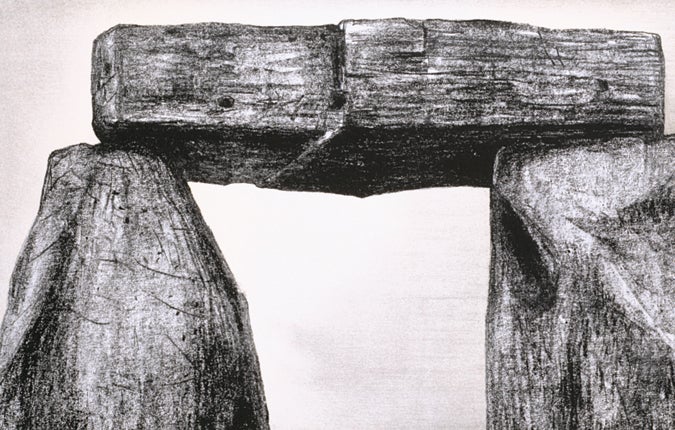Henry Moore: Prints and Portfolios, Henry Moore Institute, Leeds

Was it a rage against the dying of the light that caused Henry Moore to produce so much in his last two decades?
This huge outpouring included about 600 prints, a pretty comprehensive selection of which are currently on show at the Henry Moore Institute in Leeds, selected by his sometime assistant David Mitchinson, who has also produced an equally exhaustive and door-stopping catalogue raisonné (Patrick Cramer, £70) to guide us through the maze.
The difficulty with Moore, always, is his repetitiousness. If it was worth doing something once, it was worth doing it over and over again. Moore, and especially the later Moore, always looks so Moorish. He could never be anybody else. He is almost incapable of dancing away from himself and really surprising himself (or us). This produces a feeling of jadedness in the onlooker. So these prints, by and large, show us very familiar images, albeit in three dimensions, and with added touches of colour – the massive, faux-ancient recumbent figures in a landscape, the mother and child studies etc, etc. He is plundering his private stock of familiar motifs and, generally speaking, ringing fairly small changes. One thing he does do that pleases is to set several sculptural motifs beside each other on the same sheet – a row of standing figures, for example – so that they can work together rhythmically. These juxtapositions manage to add dibs and dabs of humour here and there, and a bit of light relief is always welcome when you are in the company of Henry.
What is new from these years is a small selection from the 33 etchings he made of studies of an elephant's skull, an object that he acquired in the late 1960s. We see him mining the shape – its surfaces, its curvatures, its so suggestive voids – for sculptural ideas. Many of the works here were done in response to poems by the likes of W H Auden and Stephen Spender (Spender was incidentally, the only man whose portrait Moore ever realised in two dimensions.) In the case of Auden, Moore is genuinely doing his best to get into the mood of the poems, to interpret them. He is not, as so often with his collaborations, insisting on being cussedly, doggedly Moore beside the words of someone else. And it is a pretty bleak mood too – well, he did have pleurisy at the time. The most arresting image in the entire show – and it is fairly unMoorish – is based on a quotation from a poem by Auden called "The Shield of Achilles". It's a lithograph, very dense and very black. As you look, you feel you might, by some miracle, be peering into a coal seam. At its middle, through the horizontal bandings of the thickly inked paper, you see what looks like a tiny seam of human forms, moving from side to side. They are trapped in there, horribly so, like minerals, and they are swarming together so tightly that it puts you in mind of the films of the Israeli artist Michal Rovner.
Much of the rest is yet more damned Moore, on and on. Well, why not give yourself a good old posthumous plug if you are on display in the Henry Moore Institute?
To 3 April (0113 246 7467)
Subscribe to Independent Premium to bookmark this article
Want to bookmark your favourite articles and stories to read or reference later? Start your Independent Premium subscription today.

Join our commenting forum
Join thought-provoking conversations, follow other Independent readers and see their replies